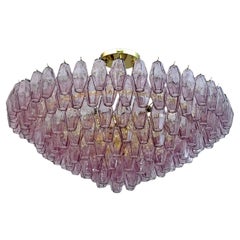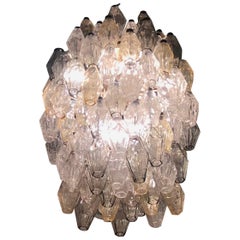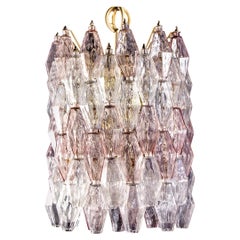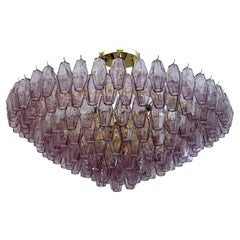Murano Glass Chandeliers and Pendants
Mid-20th Century Italian Mid-Century Modern Murano Glass Chandeliers and Pendants
Metal
1970s Italian Mid-Century Modern Vintage Murano Glass Chandeliers and Pendants
Brass
1950s Italian Other Vintage Murano Glass Chandeliers and Pendants
Murano Glass
1950s Italian Other Vintage Murano Glass Chandeliers and Pendants
Murano Glass
1950s Italian Mid-Century Modern Vintage Murano Glass Chandeliers and Pendants
Metal
1950s Italian Other Vintage Murano Glass Chandeliers and Pendants
Murano Glass
1950s Italian Mid-Century Modern Vintage Murano Glass Chandeliers and Pendants
Metal
Mid-20th Century Italian Mid-Century Modern Murano Glass Chandeliers and Pendants
Metal
Mid-20th Century Italian Mid-Century Modern Murano Glass Chandeliers and Pendants
Metal
Mid-20th Century Italian Mid-Century Modern Murano Glass Chandeliers and Pendants
Metal
1960s Italian Vintage Murano Glass Chandeliers and Pendants
Metal
1950s Italian Other Vintage Murano Glass Chandeliers and Pendants
Murano Glass
1950s Italian Other Vintage Murano Glass Chandeliers and Pendants
Murano Glass
Mid-20th Century Italian Mid-Century Modern Murano Glass Chandeliers and Pendants
Metal
1950s Italian Mid-Century Modern Vintage Murano Glass Chandeliers and Pendants
Glass, Murano Glass
1930s Italian Art Deco Vintage Murano Glass Chandeliers and Pendants
Brass
21st Century and Contemporary Italian Modern Murano Glass Chandeliers and Pendants
Chrome
1950s Italian Mid-Century Modern Vintage Murano Glass Chandeliers and Pendants
Glass, Murano Glass
1950s Italian Mid-Century Modern Vintage Murano Glass Chandeliers and Pendants
Iron
21st Century and Contemporary Italian Neoclassical Murano Glass Chandeliers and Pendants
Blown Glass, Murano Glass
1950s Italian Mid-Century Modern Vintage Murano Glass Chandeliers and Pendants
Metal
20th Century Italian Mid-Century Modern Murano Glass Chandeliers and Pendants
Metal
1950s Italian Mid-Century Modern Vintage Murano Glass Chandeliers and Pendants
Metal
1950s Italian Mid-Century Modern Vintage Murano Glass Chandeliers and Pendants
Murano Glass
1950s Italian Mid-Century Modern Vintage Murano Glass Chandeliers and Pendants
Murano Glass
20th Century Italian Mid-Century Modern Murano Glass Chandeliers and Pendants
Brass
1970s Italian Mid-Century Modern Vintage Murano Glass Chandeliers and Pendants
Brass
Mid-20th Century Italian Murano Glass Chandeliers and Pendants
Metal
1980s Italian Vintage Murano Glass Chandeliers and Pendants
Blown Glass
Mid-20th Century Italian Mid-Century Modern Murano Glass Chandeliers and Pendants
Blown Glass
20th Century Italian Mid-Century Modern Murano Glass Chandeliers and Pendants
Glass
1950s Italian Mid-Century Modern Vintage Murano Glass Chandeliers and Pendants
Iron
1980s Mid-Century Modern Vintage Murano Glass Chandeliers and Pendants
Glass
1980s Italian Mid-Century Modern Vintage Murano Glass Chandeliers and Pendants
Blown Glass
20th Century Italian Mid-Century Modern Murano Glass Chandeliers and Pendants
Glass
1950s Italian Other Vintage Murano Glass Chandeliers and Pendants
Murano Glass
1980s Mid-Century Modern Vintage Murano Glass Chandeliers and Pendants
Blown Glass
1950s Italian Other Vintage Murano Glass Chandeliers and Pendants
Murano Glass
1950s Italian Mid-Century Modern Vintage Murano Glass Chandeliers and Pendants
Metal
Late 20th Century Italian Mid-Century Modern Murano Glass Chandeliers and Pendants
Murano Glass
20th Century Italian Mid-Century Modern Murano Glass Chandeliers and Pendants
Brass
1970s Italian Mid-Century Modern Vintage Murano Glass Chandeliers and Pendants
Brass
Mid-20th Century Italian Mid-Century Modern Murano Glass Chandeliers and Pendants
Iron
1940s Italian Vintage Murano Glass Chandeliers and Pendants
Aluminum
1960s Italian Mid-Century Modern Vintage Murano Glass Chandeliers and Pendants
Murano Glass
1970s Italian Mid-Century Modern Vintage Murano Glass Chandeliers and Pendants
Brass
1960s Italian Mid-Century Modern Vintage Murano Glass Chandeliers and Pendants
Metal
1970s Italian Mid-Century Modern Vintage Murano Glass Chandeliers and Pendants
Brass
1950s Italian Mid-Century Modern Vintage Murano Glass Chandeliers and Pendants
Steel
1960s Italian Vintage Murano Glass Chandeliers and Pendants
Murano Glass
1960s Italian Post-Modern Vintage Murano Glass Chandeliers and Pendants
Metal
1950s Vintage Murano Glass Chandeliers and Pendants
Murano Glass
Shop Antique and Vintage Murano Glass Chandeliers and Pendants on 1stDibs
Lighting is a home’s jewelry, and dramatic antique and vintage Murano glass chandeliers enhance a space without stealing the show.
The exquisite Murano glass pendants and chandeliers on 1stDibs are made of Murano glass, named for the island of Murano, which is located in Venice's fragile lagoon. Murano glassmaking has been practiced for centuries, using a variety of artisanal processes. The glass is identifiable by its richly layered colors and characteristic gold or silver flecks inside the glass.
Every antique Murano chandelier, floor lamp and vase is unique. Authentic Murano glass often has small imperfections and irregular shapes due to the freeform creation process. This glass introduces dazzling pops of colors and provocative forms to your dining table, and mid-century Murano glass is particularly sought after by today’s collectors.
One of the earliest Venetian glass furnaces is believed to have been established as far back as the 8th century. While Murano glass is traditionally known for being blown glass, there are also Murano glass beads and mosaics, and the art of Venetian glassblowing has seen a range of different techniques evolve over the course of its long history. These techniques include calcedonio, millefiori and more, and enameling and gilding are also practiced at the furnaces. The celebrated filigrana technique is as old as Renaissance-era Italy, with origins in the 16th century.
This striking chandelier was created using the rigadin technique, which involves blowing the glass into a special bronze mold with grooves that leave an imprint on its molten surface, resulting in either decorative swirls or a ribbed effect.
Many Murano glassmakers have gained renown all over the world for their extraordinary chandeliers, table lamps and decorative objects.
Ercole Barovier left an indelible mark on the world of Italian modernist glassmaking, for example — his vibrant use of color and exploration of innovative techniques yielded glass vases, chandeliers and other lighting and decorative objects that stand out in any home many decades later. Barovier’s manufactory was eventually renamed Barovier & Toso, a name under which the company still operates today. Still produced by hand, its pieces, including the Quadri chandelier and Hanami chandelier, look as appropriate in contemporary interiors as historic ones.
Archimede Seguso, whose company was later renamed Seguso Vetri D’Arte, redefined a 650-year family history of Murano glassmaking with brilliance and novel techniques.
Founded in 1921 by Milanese lawyer Paolo Venini and antiques dealer Giacomo Cappellin, Venini & Co. played an important role in pairing forward-thinking modernist designers with skilled glassblowers. In Venini’s early years, the firm was led by visionary art directors Napoleone Martinuzzi and Vittorio Zecchin, and would eventually collaborate with Gio Ponti, Massimo Vignelli and Finnish designer Tapio Wirkkala. In 1925, Venini earned the Grand Prix at the International Exhibition of Modern Decorative and Industrial Arts — the design fair that introduced the Art Deco style to the world.
The story of Salviati glass, which supported the revival of Venice’s flagging Murano glass industry in the 19th century, began with Vicenza-born lawyer and entrepreneur Antonio Salviati whose love of Murano glass art and mosaics inspired him to establish his own mosaic and glass manufacturing firm.
Find antique and vintage Murano glass chandeliers, sconces and pendants on 1stDibs.






